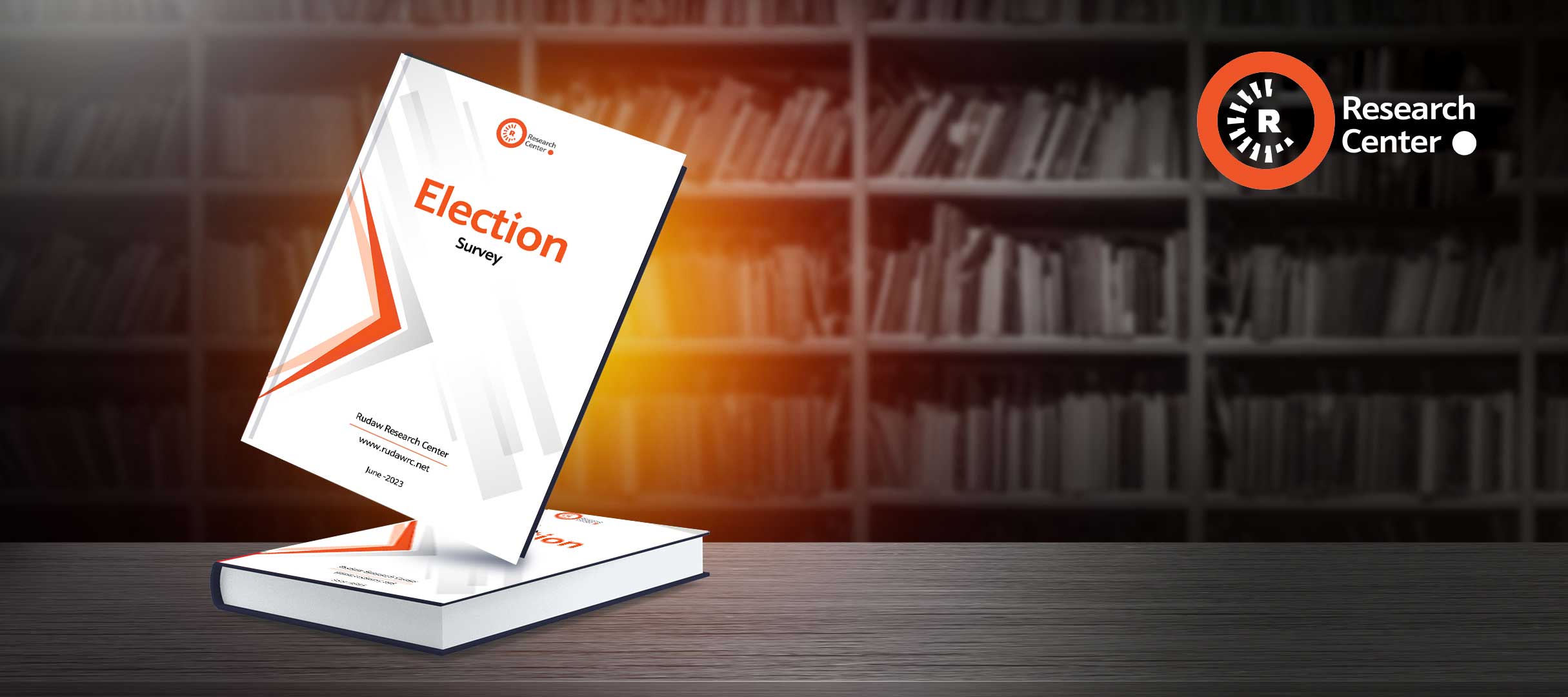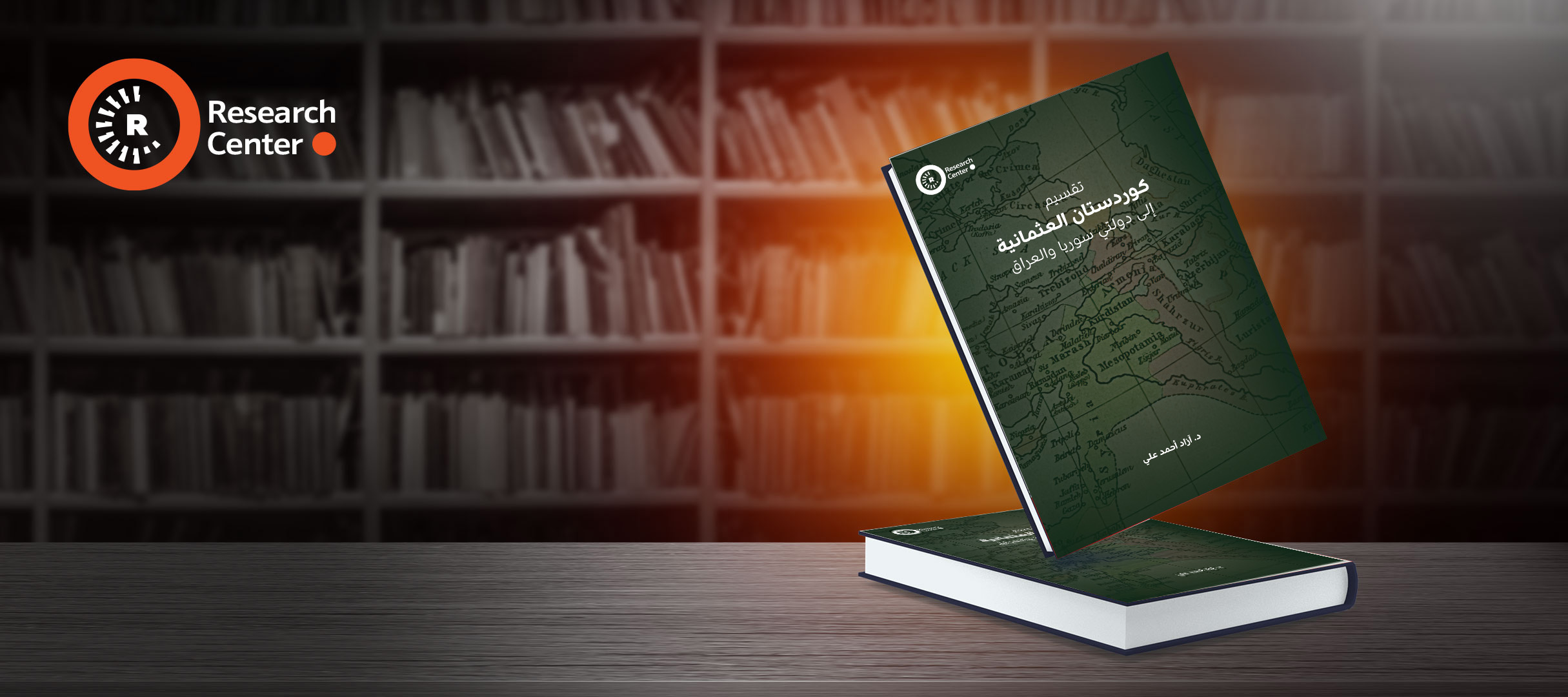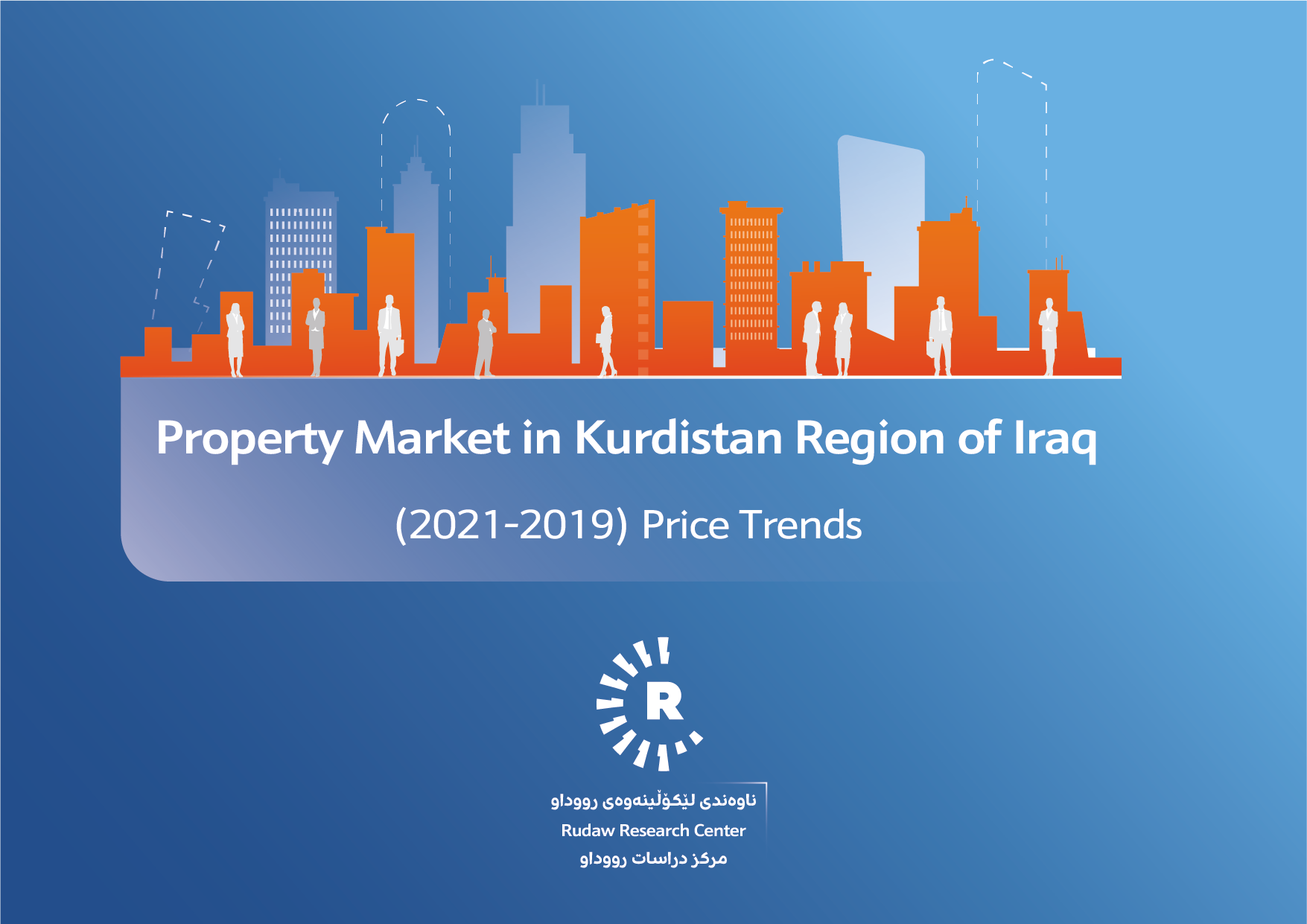The upcoming elections hold the potential for unexpected results, as revealed by the poll, primarily due to several factors related to voter demographics and changing population figures in the Kurdistan Region. In the 2018 Kurdistan Parliamentary elections, the voter count stood at 3,085,461. Since then, the Iraqi Independent High Electoral Commission (IHEC) has projected the number of voters to be 3,227,551 for 2021, and currently, it stands at 3,641,000 voters. Certainly, in anticipation of the upcoming parliamentary elections, set to take place on February 25, 2024, as per the most recent directive issued by President Nechirvan Barzani, the projected number of voters is expected to rise. However, considering the present statistics as a foundation, the current count of over 400,000 new voters is poised to expand further.
Summary
This study, carried out by Rudaw Research Center, encompassed a survey of 2,412 citizens aged 18 and older from the Kurdistan Region, selected at random. The participants were categorized based on their geographical locations into urban, peri-urban, and rural areas. The gender distribution among respondents closely mirrored that of the overall population in Kurdistan, with 55.3% male participants and 44.7% female participants.
Roughly 60.3% of the surveyed population expressed their intention to participate in the forthcoming parliamentary elections, displaying similarity in turnout rates when compared to previous elections. This inclination towards participation seems to arise from a combination of new voters entering the scene and a strong aspiration among young individuals to engage in the electoral process. Moreover, the prevalent political climate and heightened polarization could also be significant factors impacting individuals’ decisions to take part in the elections. The survey indicates that three distinct groups — non-participants, undecided voters, and those opting for blank ballots — are poised to play substantial roles in the upcoming elections. Particularly noteworthy is the 39.7% of voters who intend to refrain from voting, along with 29.2% who responded positively but withheld their voting choice and 3.7%, indicated a plan to cast blank ballots. This cumulative figure amounts to 2,167,252 voters.
Emerging as the frontrunner in the electoral race is the Kurdistan Democratic Party (KDP) with 1,012,136 votes, securing 46.1% of the segment planning to vote which account for 60.3% of the total population surveyed. The Patriotic Union of Kurdistan (PUK) obtained 11.3% of the vote, equivalent to 248,094 votes, while The New Generation party garnered 5.5%, amounting to 120,653 votes. Both the PUK and KDP achieved greater voter support compared to the previous election. However, the substantial number of undecided voters 29.2% and blank ballots 3.7% elevates the possibility of unforeseen outcomes in this election.
These outcomes are not unexpected, given the observed shifts in voter preferences within the Kurdistan Region. Intriguingly, participants’ primary concerns revolved mainly around economic and daily life matters, with democracy and liberties receiving comparatively limited emphasis.
The survey, carried out by the Rudaw Research Center, encompasses three distinct sections: voting behavior, voter preferences, and political views and priorities. The objective of these sections is to offer valuable insights into the forthcoming parliamentary elections of the Kurdistan Regional Government (KRG) and the positioning of various political parties.
Key Findings
- The projected turnout rate for the upcoming elections is expected to remain at approximately 60%, similar to the 2018 elections.
- Participation tends to decline with increasing age groups, with a notable majority of first-time voters showing preference for the KDP, followed by The New Generation and the PUK. Youth participation in the elections is most pronounced in the Kurdistan Region’s Erbil and Duhok provinces, contrasting with lower enthusiasm in Sulaymaniyah and Halabja.
- The desire to participate in elections diminishes as one moves from rural to urban environments.
- Survey results indicate that 57.7% of participating voters make their party choice more than a month before election day.
- Notably, the next election is poised to witness significant proportions of non-participants, undecided voters, and blank voters, totaling around 2,167,252 individuals.
- Remarkably, the first victors in the upcoming elections are likely to be non-participants, comprising over 1.4 million voters, representing 39.7% of the electorate in the Kurdistan Region. However, the potential for unexpected outcomes lies in undecided voters and blank voters, who together account for 32.9% of the voting population.
- The highest percentage of undisclosed votes is concentrated in areas where parties like the PUK and KDP had previously held strong influence and where new lists are expected to gain support in the upcoming elections.
- Voter priorities may have undergone changes, leading to increased voter hesitation. Survey results indicate that current voter concerns are primarily focused on economic and service-related issues, surpassing issues related to democracy and freedoms.
The Research Team
Ziryan Rojhelati
Mahmood Baban
Raqib Bahaaddin Mohammed
The Data Collection Team
Darya Rafiq
Evers Rashid
Barwar Abdullah
Hazhin Fatah
Vin Siamend
Paywand Shamal
Dnya Talb
Azhin Razgar
Design
Alan Pewend
Translation
Soma Zrar
How we did this
This survey was conducted through face-to-face interviews in diverse locations, including rural, urban, and surrounding areas, in preparation for the upcoming elections in the Kurdistan Region. The data collection period spanned from June to July. A total of 2,412 samples were gathered, with 6 samples collected from each neighborhood, ensuring a representative sample of the local voters. However, it is essential to note that in certain areas, particularly in the city center, some individuals declined to participate in the survey. This factor was duly considered during the analysis of the results.
Preface
Elections have been a contentious issue in the Kurdistan Region, characterized by repeated delays and party disagreements over their conduct, further escalating political tensions. The prolonged situation has attracted the involvement of various Iraqi and foreign actors, making it crucial to understand the perspectives of the key stakeholders, namely the voters, to gain insight into the domestic dynamics of this issue. The results of this survey provide valuable information on the voting behavior in the Kurdistan Region, shedding light on the anticipated level of citizen participation in the forthcoming elections. This survey highlights that the desire to participate in elections varies across demographics. Younger individuals show greater enthusiasm for voting compared to older age groups. Additionally, females exhibit a higher inclination to participate than males, and the unemployed or economically inactive individuals demonstrate more interest in elections compared to those who are employed. Furthermore, there is a noticeable decline in the desire to participate in elections as one transitions from rural environments to urban centers.
The upcoming elections hold the potential for unexpected results, as revealed by the poll, primarily due to several factors related to voter demographics and changing population figures in the Kurdistan Region. In the 2018 Kurdistan Parliamentary elections, the voter count stood at 3,085,461. Since then, the Iraqi Independent High Electoral Commission (IHEC) has projected the number of voters to be 3,227,551 for 2021, and currently, it stands at 3,641,000 voters. Certainly, in anticipation of the upcoming parliamentary elections, set to take place on February 25, 2024, as per the most recent directive issued by President Nechirvan Barzani, the projected number of voters is expected to rise. However, considering the present statistics as a foundation, the current count of over 400,000 new voters is poised to expand further. By the year 2024, this figure is anticipated to reach an estimated range of 500,000 to 600,000.
Notably, 61% of first-time eligible voters aged 18-22 have expressed their intention to vote. However, the desire to participate declines as the age group increases, reaching a mere 17% among individuals aged 60 and above. A previous survey conIntroduction ducted by the Rudaw Research Center in June reported that 72% of young people aged 15-29 expressed their desire to vote, contingent on their eligibility, as some of them were not old enough to vote at the time.
The Kurdistan Democratic Party (KDP) garners the highest percentage of votes among voters, followed by 23% who choose not to disclose their vote, then The New Generation Party, and finally the PUK. This distribution is unsurprising considering the concentration of young people in Duhok and Erbil provinces, where the desire to participate in elections tends to be higher in surrounding areas and villages rather than in the center of major cities. The survey data also indicates that the highest demand for electoral participation was observed in Soran, Zakho, Erbil, and Duhok, while the lowest demand was recorded in Raperin, Halabja, Garmian, and Sulaymaniyah.
The upcoming election is poised to witness an intriguing dynamic, with the first notable winners being those who choose not to vote. Among the estimated 3,641,000 voters in the Kurdistan Region, this group constitutes more than 1.4 million voters, accounting for 39.7% of the electorate. However, the potential for unexpected results arises from two other significant groups: the “undecided voters” and the “blank voters,” both of whom might change their preferences until the last moment. Together, these groups make up 32.9% of the electorate. The survey indicates that there are 29.2% of “undecided voters,” totaling 641,092 voters, and 3.7% of “blank voters,” adding up to 81,207 individuals.
Notably, the areas with the highest percentage of voters are Sulaymaniyah 55.1%, Halabja 53.1%, Raperin 49.1%, and Erbil 26.4%. This implies that while the initial winner is becoming evident in areas like Duhok, Zakho, and Soran, the determination of the first winner in Sulaymaniyah, Garmian, Raperin, and Halabja hinges on the choice of the undecided voters considering the undecided voters are expected to originate from parties outside the PUK and KDP. It is uncertain whether they will be divided among other parties or go to a new political entity, reminiscent of a situation seen in 2009. Unlike 2009, however, voters appear more hesitant due to changing priorities. Economic and service-oriented issues, such as attention to ba sic services 56.7%, employing university graduates 41.8%, repaying salary arrears 39.8, and eliminating corruption 34.2%, are of higher importance to voters. In contrast, freedom of opinion received support from 2.6% of respondents, and political stability from 5.2%. This reflects a shift towards economic and service-focused concerns, overshadowing matters related to democracy and freedoms. Consequently, only the PUK and KDP may see a rise in their votes in the next elections, while other parties may face challenges. Additionally, areas with high historical support for the other parties witness the highest abstention rates and votes not being disclosed. For instance, 59.3% in Sulaymaniyah, 59% in Garmian, 56.7% in Halabja, and 42.1% in Raperin declared their intention not to participate in the elections, while the percentages were lower in Erbil 35.7%, Soran 33%, Duhok 25.7%, and Zakho 6.8%. Regarding the timing of decision-making, 57.7% of voters decide which party to vote for more than a month before election day, reflecting the influence of political polarization on voter behavior in the Kurdistan Region. However, a substantial number of voters remain undecided or reluctant to participate.
According to the survey findings, the next election is projected to witness a substantial portion of voters who will not participate, undecided voters, or blank voters, 39.7% of voters intend to abstain from voting, 29.2% of those who responded positively but they refused to disclose their vote and 3.7%, expressed their plan to cast blank ballots. This group constitutes the largest proportion of voters, with an estimated total of 2,167,252 individuals. Consequently, the potential for unforeseen results in the forthcoming elections becomes more apparent. The primary aim of the survey was to gain insights into people’s perspectives on the elections, their future voting behavior, and their priorities and choices. To achieve this, we conducted direct-random interviews with 2,412 individuals across 402 different locations throughout the Kurdistan Region. The survey responses provide significant clues as to why elections remain a controversial issue at the local level.
Ziryan Rojhelati
Director of Rudaw Research Center
Demographic Profile of the Participants
The survey encompassed 2,412 citizens aged 18 and above from across the Kurdistan Region. To ensure a comprehensive representation, we categorized the respondents’ environments into three categories: urban, suburban, and rural. The samples collected at the Kurdistan Regional Government level included 1,044 from urban environments, 858 from suburban areas, and 510 from rural areas.
Cities like Zakho, Halabja, Sulaymaniyah, and Garmian exhibited the highest levels of urban resident engagement, while Duhok province displayed the lowest levels. Intriguingly, Duhok had the greatest rate of suburban participation at 48.8%, closely followed by Erbil at 45.9%. Notably, Halabja and Zakho had no participants from surrounding urban areas. Among the villages, Soran had the highest participation rate at 35%, followed by Duhok with 31%, and Erbil with 22.1%. The lowest participation rates were observed in Zakho with 10% and Sulaymaniyah with 13.8%. In certain villages around Sulaymaniyah, the survey teams were unable to visit due to security reasons, impacting the overall turnout in Sulaymaniyah.
The gender distribution among the participants was 44.7% female and 55.3% male. Erbil had the highest male involvement rate at 62%, followed by Soran at 58.3%, Sulaymaniyah at over 53%, and Duhok at over 53%. Among women, the greatest participation rates were in Garmian 60.2%, Raperin 59%, and Halabja 50.9%. The lower involvement of women in major cities of the Kurdistan Region compared to smaller areas raises intriguing questions. Regarding marital status, 72.4% of the respondents were married, 26.0% were unmarried, and 1.6% were divorced. In terms of education, 20.8% of respondents were illiterate, 7.6% were literate, 19.5% had completed elementary school, 17.9% had a secondary education, 13.8% had a high school education, 9.2% beyond high school, 10.8% had a university education, and 0.3% had higher education diploma. Accordingly, 65% of respondents had not completed high school, 13.8% completed high school, and 20.4% had completed beyond high school. In terms of occupation, 49.8% of respondents were employed, 9.9% considered themselves unemployed, 5.7% identified as students, 32% as housewives, and 2% were disabled and sick. Thus, 40.3% were economically inactive and mainly engaged in unpaid work.
Similar to the findings of a previous survey conducted by Rudaw Research Center on youth, the participation of women in the labor market within the Kurdistan Region remains significantly low, highlighting a substantial gender gap in the workforce. Specifically, 78% of those employed are male, while only 14.8% are female. Moreover, the influence of educational background on career prospects is evident, with 74% of those who have completed higher education being employed, 52% of those with high school education are employed and 41.7% of those with less than a high school diploma are working, a figure that gradually declines with lower educational levels. This educational factor also correlates with the respondents’ respective environments.

In urban areas, 55% of respondents are employed, but this rate drops to 45.8% in peripheral urban regions and remains approximately 45% in rural areas. Among the cities, 59.4% of respondents in Sulaymaniyah reported being employed, while the figure was 54.6% in Erbil, followed by Halabja and Zakho, with Garmian displaying the lowest employment rate at 25.9%. Conversely, the highest unemployment rate was observed in Garmian at 20.4%, followed by Duhok with 15.9%, Zakho with 13.3%, and Halabja with 11.1%. Economically inactive respondents were most prevalent in Garmian and Raperin, surpassing 53%, with Soran at 44.2%, and Duhok and Halabja trailing.
In terms of age group, 19.3% of respondents were aged 18-24, with the highest proportion falling within the 25-39 age group 39.9%. The 40-59 age group accounted for 30.3% of respondents, while citizens over 60 years old represented 10.5%. The average age of the respondents was 38 years old, and the average family size in the Kurdistan Region was approximately 6 people, with over 4 of them being over 17 years old. Notably, the 25-39 age group demonstrated the highest proportion of employed individuals, as well as the highest number of those not working or economically inactive are from the group aged 25-39. Among the youth aged 18-24, Zakho had the highest percentage at 25%, followed by Garmian at 24.1%, Raperin at 22.4%, and Duhok at 21.6%.






